1. Crunch Time: A Sustainable Bite of the Future
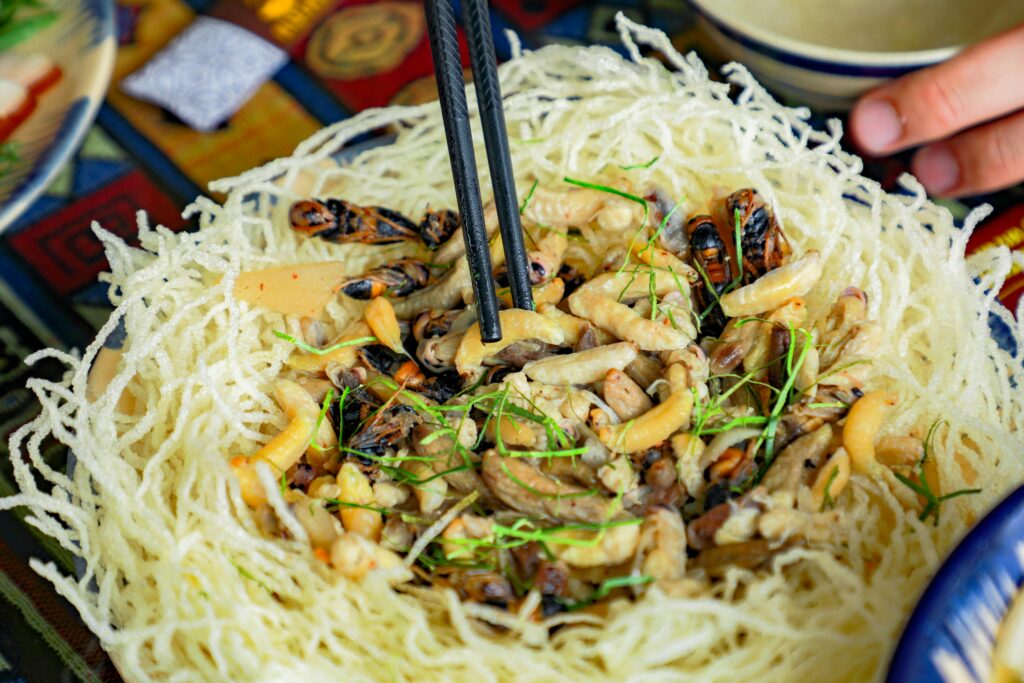
Imagine a world where your protein comes from a source that’s both delicious and gentle on the planet. That’s the promise of edible insects. It might sound like a sci-fi fantasy, but the truth is, many cultures around the world have been enjoying insects for centuries. Crickets, mealworms, and even ants are packed with protein, vitamins, and minerals. Think of it as a superfood that’s been hiding in plain sight. With our growing population and the increasing strain on our resources, finding sustainable food sources is more important than ever. Experts point out that insect farming requires significantly less land, water, and feed compared to traditional livestock. This means a smaller carbon footprint and less environmental impact. The transition to insect-based protein could be a game-changer for our food systems.
The versatility of insects in culinary applications is also a key factor driving their growing popularity. You can find them in everything from protein bars and chips to flour and even pasta. Chefs are experimenting with insect-based ingredients, creating innovative and delicious dishes. The nutty flavor of crickets or the earthy taste of mealworms can add a unique twist to familiar recipes. As people become more open to trying new foods, insects are finding their way onto restaurant menus and supermarket shelves. The nutritional benefits are undeniable, offering a complete protein source comparable to meat, but with added fiber and healthy fats. The cultural shift towards more sustainable and health-conscious eating habits is paving the way for insects to become a mainstream food trend.
2. Buzzworthy Bites: Protein That Packs a Punch
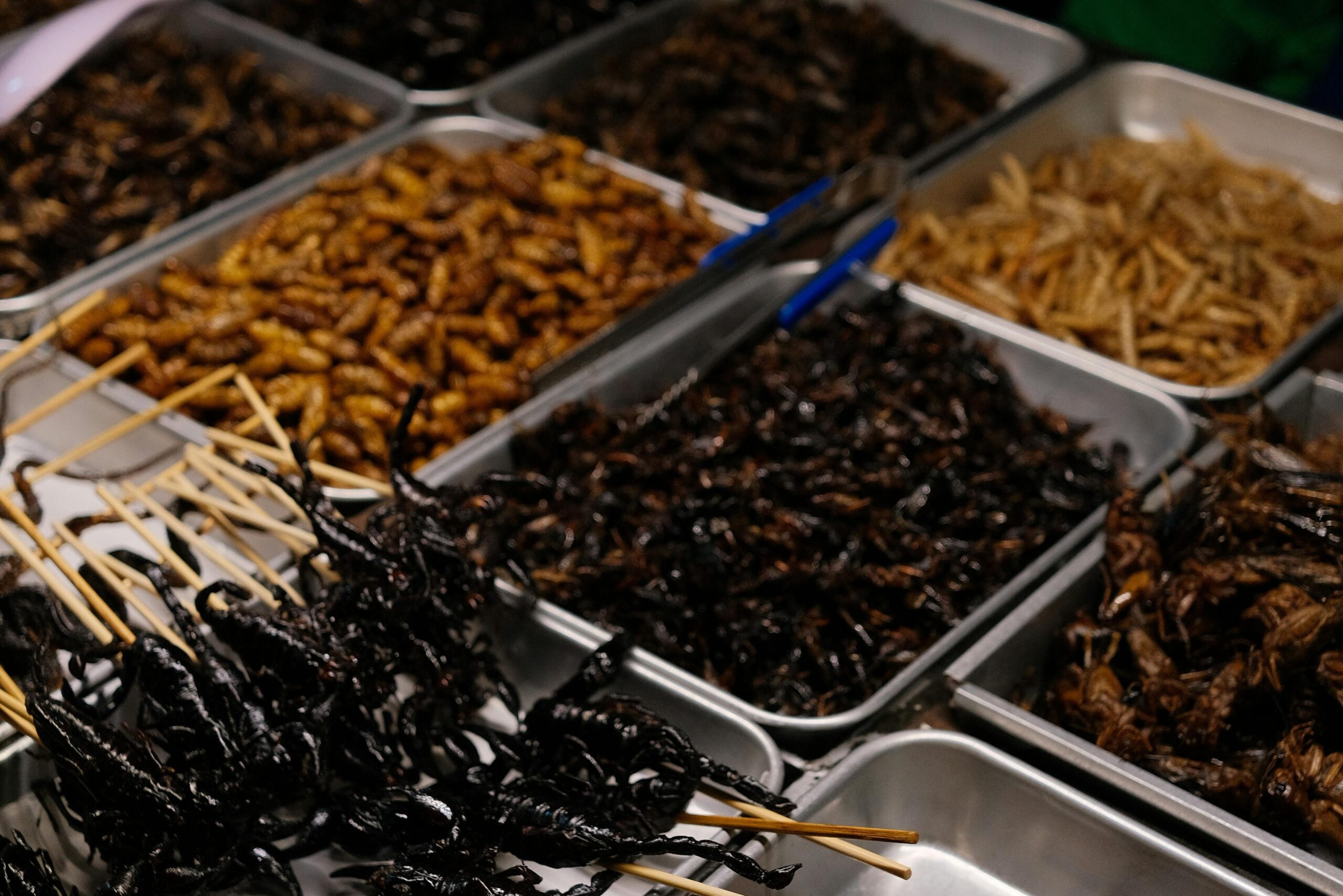
Let’s talk about protein, the building block of our bodies. Insects are not just a novelty; they’re a powerhouse of protein. Think of scorpions, for example, which can contain more protein per gram than beef. And it’s not just about the quantity; it’s about the quality. Insects provide a complete protein source, meaning they contain all the essential amino acids our bodies need. This makes them a fantastic option for athletes, fitness enthusiasts, and anyone looking to boost their protein intake. The digestibility of insect protein is also a significant advantage, as our bodies can efficiently absorb and utilize it.
Beyond protein, insects are also rich in essential nutrients like iron, zinc, and vitamin B12. These nutrients play crucial roles in maintaining our energy levels, supporting our immune system, and promoting overall health. The high fiber content in some insects, like mealworms, can also contribute to healthy digestion. Experts emphasize the importance of considering the nutritional profile of insects when evaluating their potential as a sustainable food source. The combination of high protein, essential nutrients, and fiber makes insects a well-rounded and nutritious addition to our diets. The growing awareness of these nutritional benefits is driving the demand for insect-based products, as people seek out healthier and more sustainable food options.
3. Garden Gastronomy: Farming That’s Friendly to the Earth
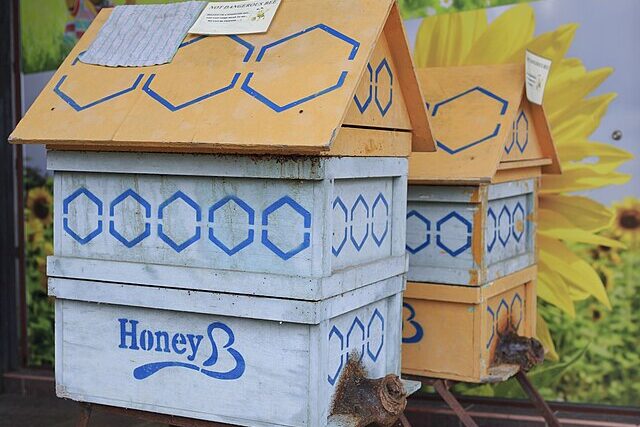
Imagine farming that doesn’t require vast tracts of land or gallons of water. That’s the beauty of insect farming. Crickets, mealworms, and other edible insects can be raised in vertical farms, using minimal space and resources. This makes them a sustainable alternative to traditional livestock, which often requires significant land and water inputs. The environmental impact of insect farming is significantly lower, reducing greenhouse gas emissions and minimizing pollution. Think of it as a way to nourish ourselves while being kind to our planet. Experts highlight the efficiency of insect farming, noting that insects can convert feed into protein much more efficiently than cows or pigs. This means we can produce more food with fewer resources.
The ease of raising insects also makes them a viable option for urban farming and community gardens. Imagine growing your own protein source in your backyard or on your balcony. This could revolutionize our food systems, making them more localized and resilient. The potential for insect farming to empower communities and promote food security is immense. The growing interest in sustainable agriculture and urban farming is creating a fertile ground for the adoption of insect-based food production. The ability to produce high-quality protein with minimal environmental impact is a compelling reason to embrace this emerging food trend.
4.Culinary Crickets: A World of Flavor Awaits
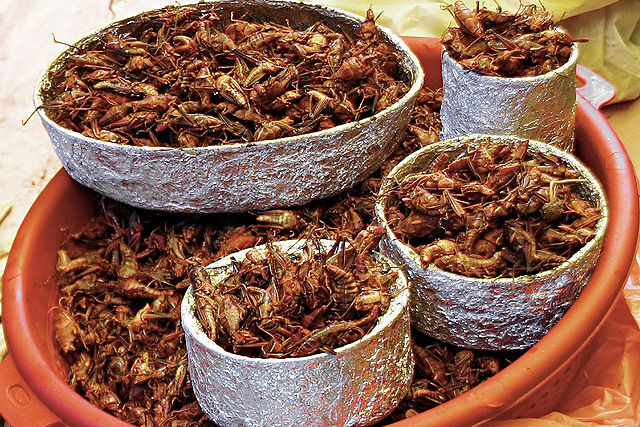
Let’s talk about taste, because food is not just about nutrition; it’s also about enjoyment. Insects offer a surprising range of flavors, from the nutty notes of crickets to the slightly sweet taste of mealworms. Chefs around the world are experimenting with insect-based ingredients, creating innovative and delicious dishes. Think of cricket flour used in baking, adding a unique flavor and texture to bread and pastries. Or mealworms sautéed with spices, creating a savory and satisfying snack. The possibilities are endless. The cultural diversity of insect consumption is also a fascinating aspect of this food trend. Many cultures have long traditions of eating insects, incorporating them into their cuisines in creative ways.
The growing interest in global cuisines and adventurous eating is creating an appetite for insect-based dishes. As people become more open to trying new flavors, insects are finding their way onto restaurant menus and food blogs. The versatility of insects in culinary applications is also a key factor in their growing popularity. They can be ground into flour, added to sauces, or even eaten whole. The ability to transform insects into familiar and appealing food products is making them more accessible to a wider audience. The culinary potential of insects is vast, offering a world of flavor waiting to be explored.
5. Hive to Table: The Sweetness of Sustainable Honey
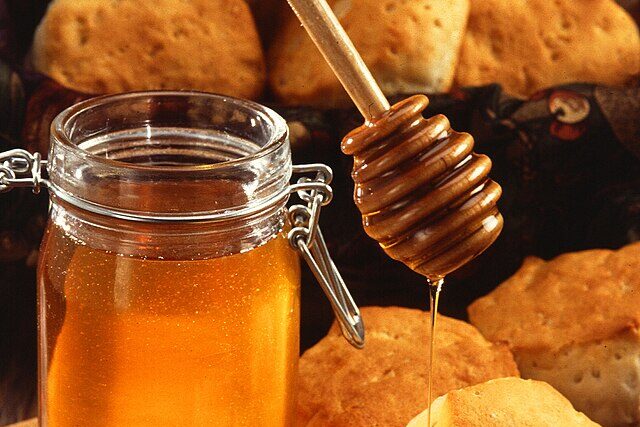
While not strictly “insects” in the same way as crickets or mealworms, bees and their honey deserve a place in this conversation about sustainable food trends. Honey, a natural sweetener produced by bees, is not only delicious but also a sustainable alternative to refined sugars. Bees play a crucial role in pollinating our crops, contributing to the health of our ecosystems. Supporting beekeeping and sustainable honey production is a way to promote biodiversity and environmental sustainability. Think of honey as a gift from nature, a sweet treat that’s good for us and good for the planet. The complex flavors of honey, influenced by the flowers the bees visit, add a unique dimension to our culinary experiences.
The growing awareness of the importance of pollinators and the threats they face is driving the demand for sustainable honey. Consumers are increasingly seeking out locally sourced and ethically produced honey, supporting small-scale beekeepers and promoting sustainable practices. The versatility of honey in culinary applications is also a key factor in its popularity. It can be used as a sweetener in beverages, baked goods, and sauces. The natural sweetness and unique flavors of honey make it a valuable ingredient in both sweet and savory dishes. The connection between honey production and environmental sustainability is a compelling reason to embrace this natural sweetener.
6. Ant-icipating Change: A Global Food Revolution
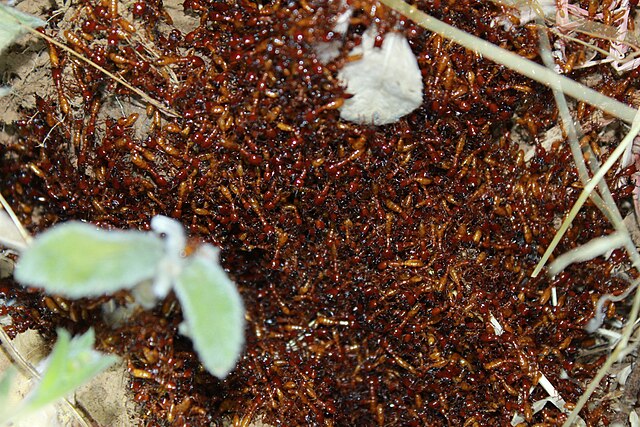
Imagine a food revolution that’s not just about what we eat but also about how we eat. Insects are poised to play a significant role in this revolution, offering a sustainable and nutritious alternative to traditional protein sources. Think of it as a shift towards a more mindful and responsible approach to food consumption. The global acceptance of insects as food is growing, with many cultures already incorporating them into their diets. This cultural diversity is a valuable resource, providing insights into the culinary potential and nutritional benefits of insects. Experts emphasize the need to bridge the gap between traditional knowledge and modern scientific understanding. This involves conducting research on the nutritional composition and safety of edible insects, as well as developing innovative processing and packaging techniques.
The growing interest in sustainable food systems and alternative protein sources is creating a fertile ground for the adoption of insect-based foods. The potential for insects to contribute to food security and environmental sustainability is immense. The ability to produce high-quality protein with minimal environmental impact is a compelling reason to embrace this emerging food trend. The cultural shift towards more sustainable and health-conscious eating habits is paving the way for insects to become a mainstream food option. The ant-icipation of this change is fueled by the growing awareness of the benefits of edible insects.
7. Worm Your Way to Wellness: A Nutrient-Rich Alternative
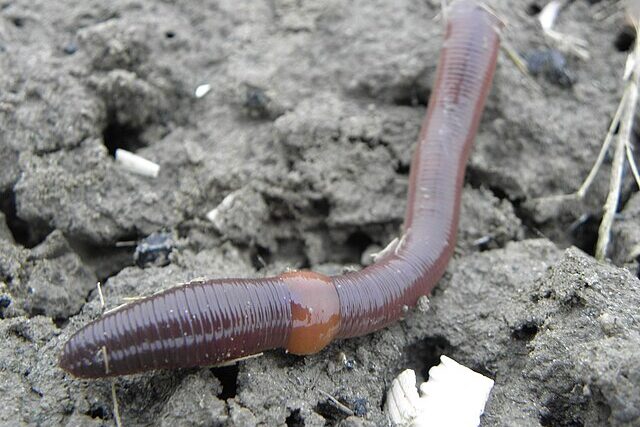
Don’t let the “worm” part deter you. Mealworms, like other edible insects, offer a wealth of nutritional benefits. Think of them as tiny powerhouses packed with protein, healthy fats, and essential minerals. They’re a sustainable alternative to traditional protein sources, requiring less land and water to produce. The high protein content in mealworms makes them a great option for building and repairing tissues, while their healthy fats contribute to heart health and brain function. The presence of essential minerals like iron and zinc supports our immune system and overall well-being. Experts highlight the importance of considering the nutritional profile of mealworms when evaluating their potential as a sustainable food source. The combination of high protein, healthy fats, and essential minerals makes them a well-rounded and nutritious addition to our diets.
The versatility of mealworms in culinary applications is also a key factor driving their growing popularity. They can be ground into flour, added to sauces, or even eaten whole. Chefs are experimenting with mealworm-based ingredients, creating innovative and delicious dishes. The nutty flavor of mealworms adds a unique twist to familiar recipes. As people become more open to trying new foods, mealworms are finding their way onto restaurant menus and supermarket shelves. The growing awareness of the nutritional benefits and culinary potential of mealworms is driving the demand for insect-based products, as people seek out healthier and more sustainable food options. Worm your way to wellness by trying insects.
8. Grasshopper Grub: A Crunchy, Sustainable Snack
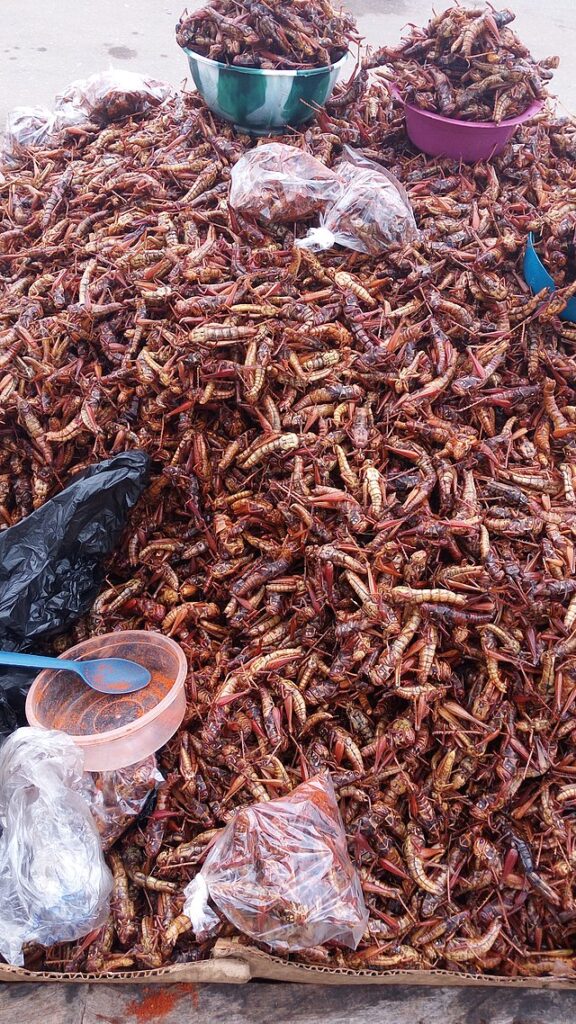
Imagine a snack that’s not only delicious but also good for the planet. That’s the appeal of grasshoppers. Think of them as crunchy, high-protein bites that offer a sustainable alternative to traditional snacks like chips or crackers. Grasshoppers are rich in protein, fiber, and essential minerals, making them a nutritious and satisfying snack option. The crunchy texture and nutty flavor of grasshoppers add a unique twist to snacking, offering a departure from the usual processed foods. Experts highlight the environmental benefits of grasshopper farming, noting that it requires significantly less land and water compared to traditional livestock. The lower environmental impact of grasshopper farming makes them a sustainable choice for conscious consumers.
The growing interest in sustainable snacking and alternative protein sources is creating an appetite for grasshopper-based products. They can be roasted, fried, or ground into flour, offering a variety of culinary applications. Chefs are experimenting with grasshopper-based ingredients, creating innovative and delicious snacks. The cultural diversity of grasshopper consumption is also a fascinating aspect of this food trend, with many cultures incorporating them into their cuisines in creative ways. The ability to transform grasshoppers into familiar and appealing snack products is making them more accessible to a wider audience. Grasshopper grub is a crunchy, sustainable snack that’s worth trying.
9. Beetle Bites: A Versatile Ingredient for Culinary Creativity

Let’s explore the world of beetles, a diverse group of insects that offer a wealth of culinary possibilities. Think of them as versatile ingredients that can be incorporated into a variety of dishes, from savory to sweet. Beetles are rich in protein, healthy fats, and essential minerals, making them a nutritious addition to our diets. The unique flavors and textures of different beetle species offer a wide range of culinary experiences. Experts emphasize the importance of exploring the culinary potential of beetles, noting their ability to add depth and complexity to dishes. The versatility of beetles in culinary applications is a key factor driving their growing popularity.
The growing interest in adventurous eating and global cuisines is creating an appetite for beetle-based dishes. They can be roasted, fried, ground into flour, or even used as a garnish. Chefs around the world are experimenting with beetle-based ingredients, creating innovative and delicious recipes. The cultural diversity of beetle consumption is also a fascinating aspect of this food trend, with many cultures incorporating them into their cuisines in creative ways. The ability to transform beetles into familiar and appealing food products is making them more accessible to a wider audience. Beetle bites offer a versatile ingredient for culinary creativity, waiting to be explored.
10. Silk to Supper: The Delicate Flavors of Silkworm Pupae
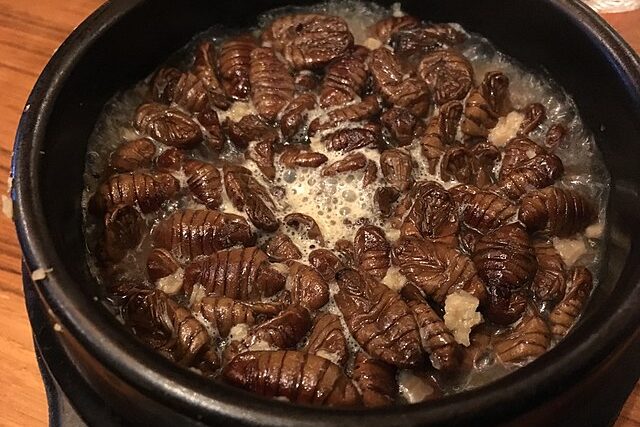
Imagine a delicate and flavorful ingredient that’s not only delicious but also sustainable. That’s the appeal of silkworm pupae. Think of them as tiny morsels of protein, rich in essential amino acids and healthy fats. Silkworm pupae offer a unique flavor profile, often described as nutty and slightly sweet. They can be incorporated into a variety of dishes, adding a delicate and nuanced flavor. Experts highlight the nutritional benefits of silkworm pupae, noting their high protein content and rich vitamin and mineral profile. The delicate flavors of silkworm pupae make them a versatile ingredient for culinary creativity.
The growing interest in sustainable protein sources and global cuisines is creating an appetite for silkworm pupae-based dishes. They can be roasted, fried, or even used in soups and stews. Chefs around the world are experimenting with silkworm pupae-based ingredients, creating innovative and delicious recipes. The cultural diversity of silkworm pupae consumption is also a fascinating aspect of this food trend, with many cultures incorporating them into their cuisines in creative ways. The ability to transform silkworm pupae into familiar and appealing food products is making them more accessible to a wider audience. Silk to supper is a delicate and sustainable culinary journey.
11. Fly High with Flavor: Maggots and the Future of Food
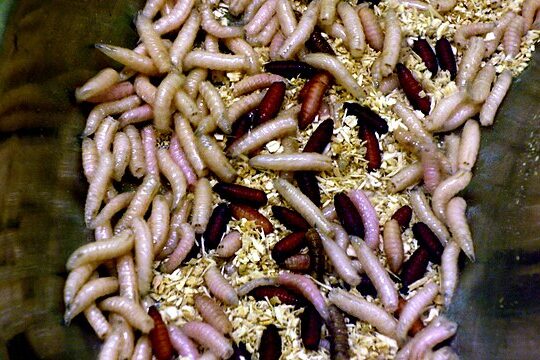
Let’s talk about maggots, an often-overlooked source of protein that’s poised to play a significant role in the future of food. Think of them as tiny protein powerhouses, rich in essential amino acids and healthy fats. Maggots offer a sustainable and efficient way to produce protein, requiring minimal resources and generating low environmental impact. Experts highlight the potential of maggots as a feed source for livestock and aquaculture, reducing the reliance on traditional protein sources like fishmeal and soybean meal. The high protein content and rapid growth rate of maggots make them a viable option for addressing food security challenges.
The growing interest in circular food systems and waste reduction is creating an appetite for maggot-based products. They can be processed into protein powders, used as feed for animals, or even incorporated into human food products. Chefs are experimenting with maggot-based ingredients, creating innovative and sustainable dishes. The ability to transform maggots into familiar and appealing food products is making them more accessible to a wider audience. Fly high with flavor, as maggots take flight into the future of food.
12. Cicada Cuisine: A Seasonal Delicacy
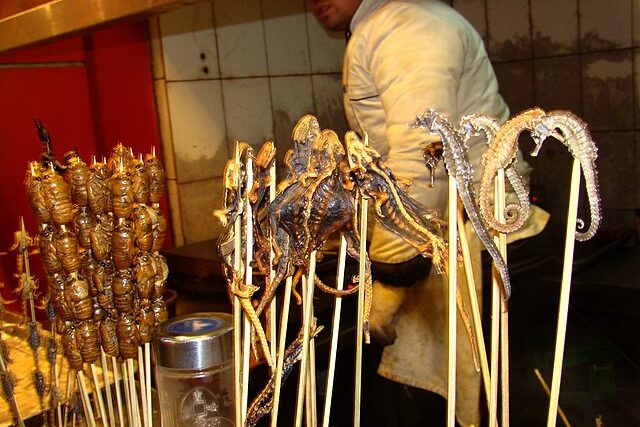
Imagine a seasonal delicacy that’s not only delicious but also sustainable. That’s the appeal of cicadas. Think of them as crunchy, nutty treats that offer a unique culinary experience. Cicadas are rich in protein, fiber, and essential minerals, making them a nutritious and satisfying food option. The seasonal availability of cicadas adds to their appeal, creating a sense of anticipation and excitement. Experts highlight the cultural significance of cicada consumption, noting that many cultures have long traditions of incorporating them into their diets. The unique flavors and textures of cicadas make them a versatile ingredient for culinary creativity.
The growing interest in seasonal eating and local food systems is creating an appetite for cicada-based dishes. They can be roasted, fried, or even used in salads and stir-fries. Chefs are experimenting with cicada-based ingredients, creating innovative and delicious recipes. The cultural diversity of cicada consumption is also a fascinating aspect of this food trend, with many cultures incorporating them into their cuisines in creative ways. The ability to transform cicadas into familiar and appealing food products is making them more accessible to a wider audience. Cicada cuisine is a seasonal delicacy that’s worth savoring.


